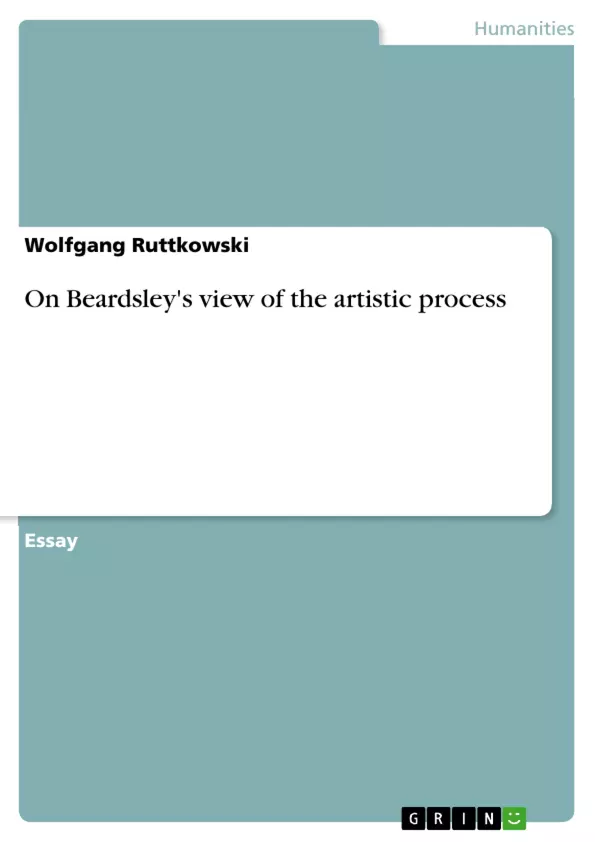In his essay "On the Creation of ART" Monroe Beardsley, probably the best known American philosopher working in the field of aesthetics, is setting himself the task of inquiring into the creative process "between the incept (short for: inceptive element) and the final touch" asking "how the work of art itself comes into existence and takes on its character through the stages or phases of this process." After an interval of more than two decades I would like to offer a few belated comments on Beardsley's ideas, since it seems to me that characteristic differences between American and German thought on this central issue of aesthetics can be shown by this.
Inhaltsverzeichnis (Table of Contents)
- ON BEARDSLEY'S VIEW OF THE ARTISTIC PROCESS
Zielsetzung und Themenschwerpunkte (Objectives and Key Themes)
This essay examines Monroe Beardsley's perspective on the artistic process, contrasting it with German thought on the subject. The author challenges Beardsley's dismissal of typological views on artistic creation, arguing for the importance of individual temperament and character in shaping the creative process.
- Differences between American and German thought on the artistic process
- The significance of individual temperament and character in creative expression
- The limitations of Beardsley's "internal" control theory
- The role of incept and personal style in the creative process
- The inadequacy of propulsive and finalistic theories in capturing the complexity of artistic creation
Zusammenfassung der Kapitel (Chapter Summaries)
- The author begins by introducing Monroe Beardsley's essay "On the Creation of ART" and its focus on the artistic process. Beardsley, a prominent American philosopher of aesthetics, aims to identify the "normal creative pattern" underlying artistic creation.
- The author then criticizes Beardsley's disregard for typological perspectives on artistic creation, which are prevalent in German thought. The author cites German theorists such as Schiller, Nietzsche, and Dilthey who emphasize the role of individual temperament and character in artistic expression.
- The author delves into Beardsley's discussion of the control mechanisms within the artistic process. Beardsley argues for an "internal" control, where the creative process itself generates its own direction and momentum. The author challenges this view, pointing to the inherent ambiguity and choices involved in the process.
- The author explores Beardsley's treatment of the incept (the initial element) in the creative process. While Beardsley acknowledges the incept's influence, the author argues for the ongoing role of the artist's choices and personal style in shaping the work.
- The author discusses Beardsley's rejection of "propulsive" and "finalistic" theories of artistic creation. The author suggests that a synthesis of these two poles, embodied in bi-polar type-theories, could offer a more comprehensive understanding of the creative process. However, Beardsley's empiricist framework leads him to reject this approach.
- The author concludes by contrasting Beardsley's empiricist view with the more idealist German typologies. The essay highlights the potential limitations of both perspectives and argues for a more nuanced understanding of the artistic process.
Schlüsselwörter (Keywords)
This essay explores the artistic process, emphasizing the importance of individual temperament and character in creative expression. It critiques Beardsley's "internal" control theory and highlights the limitations of propulsive and finalistic theories. Key themes include the contrast between American and German thought on the artistic process, the role of incept and personal style, and the significance of typological perspectives in understanding creative expression.
- Citar trabajo
- Dr. Wolfgang Ruttkowski (Autor), 1994, On Beardsley's view of the artistic process, Múnich, GRIN Verlag, https://www.grin.com/document/82650



